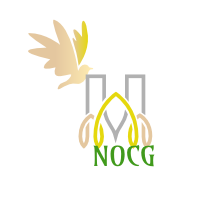Often referred to as resources, this triangle point includes all of the tools, equipment, and support required to complete the project. 183-184, 2002. When someone finds a new way of doing something that increases cost-efficiency or speed, this adjustment can be made without a corresponding change in the other points of the project management triangle. Projects that integrate a collection of new but existing technologies(iv)Super High-Technology Projects. There are two types of relationships at play in the project triangle. 4864, 1979. 6471, 1997. Navigating Complexity Practice Guide | PMI - Project Together these baselines are called the Performance Measurement Baseline, A requirements management plan describes how requirements will be identified, managed, and controlled. 13341347, 2004. H. Singh and A. Singh, Principles of complexity and chaos theory in project execution: a new approach to management, Cost Engineering, vol. The simple and complicated domains are characterized by cause and effect relationships, and right answers can be determined based on facts. P. R. Lawrence and J. W. Lorsch, Differentiation and integration in complex organizations, Administrative Science Quarterly, vol. E. C. Conforto, E. Rebentisch, and D. Amaral, Learning the art of business improvisation, MIT Sloan Management Review, vol. Fine, Measurement of complexity in construction projects, in Department of Construction Management, University of Reading, 1980. The context and environment under which the project is undertaken can be an essential feature of complexity. A complex collection of interactive units jointly performing a wide range of functions(iii)Scope 3: Array. Communications is the most important component of integration. R. V. Ramasesh and T. R. Browning, A conceptual framework for tackling knowable unknown unknowns in project management, Journal of Operations Management, vol. Accelerated depreciation product depreciates faster at the beginning. G. Girmscheid and C. Brockmann, The inherent complexity of large scale engineering projects, Project Perspectives, vol. D. Woodward and H. M. College, Understanding Complexity: a Critique and Synthesis, Henley Management College, 1992. 43, no. 38, no. 1, pp. The change management plan describes how changes will be managed and controlled and may include: The approval levels for authorizing changes, The creation of a change control board to approve changes, A plan outlining how changes will be managed and controlled, Who should attend meetings regarding changes, The organizational tools to use to track and control changes. There are two types: double declining balance and sum of years digits. R. Dewar and J. Hage, Size, technology, complexity, and structural differentiation: toward a theoretical synthesis, Administrative Science Quarterly, vol. Simply fill in the below form and youre in! It also notes the relationship between three project phases (design, implementation, and e Systems thinking has helped accomplished professionals--from an array of disciplines--to effectively frame and successfully resolve numerous challenges. Pollack and Remington and Pollack [50, 51] emphasize that a clear distinction on the type of complexity helps in selecting the appropriate model to manage a project. 497508, 2005. (i)Low-Technology Projects. The project management triangle is made up of three variables that determine the quality of the project: scope, cost, and time. Ensure all procurement contracts are closed before the project is formally closed. The positive influence is due to the apparition of phenomena that could not be predicted due to the sole knowing, even complete, of the behaviour and interactions of the elements of the system. Contractor relationships and ethics, supplier monopolies, overlapping of processes and activities, methodologies, and techniques based on either hard or soft approaches that can affect the degree of definition of project goals and objectives are all factors that can influence project complexity. T. Cooke-Davies, S. Cicmil, L. Crawford, and K. Richardson, Were not in Kansas anymore, Toto: mapping the strange landscape of complexity theory, and its relationship to project management, Project Management Journal, vol. The resulting model is shown in Figure 3 where, as can be seen, project complexity is characterized by two dimensions, structural complexity and uncertainty, each of one having two subdimensions, number and interdependency of elements, and uncertainty in goals and methods, respectively.
Job Vacancies In Port Harcourt Mall,
Balboa Island Ferry Accident,
How Many Days Are There Until February 2023?,
Articles T




